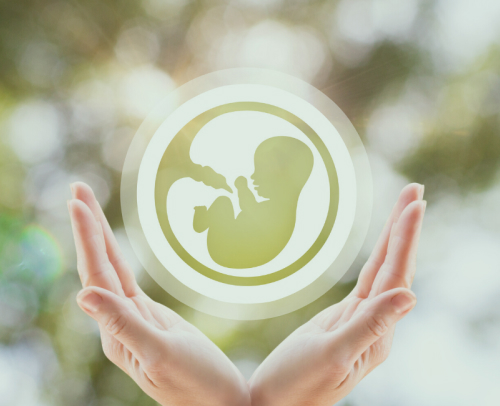The diagnosis of infertility can feel like standing at the edge of a vast, overwhelming sea. For many, the initial despair is quickly followed by a fierce determination to find a path forward. That path is paved by fertility services—a diverse landscape of medical, surgical, and therapeutic options designed to diagnose issues, optimize reproductive health, and ultimately, build families.
This is not a single road, but a network of specialized care. Understanding the options available within fertility services is the first, most empowering step a person or couple can take. It transforms the vague concept of ‘getting help’ into a structured, personalized treatment plan. The journey through treatment demands patience, resilience, and a partnership with a trusted medical team that understands the nuanced realities of infertility.
Phase I: Diagnosis and Foundational Fertility Services
Before embarking on advanced treatment, a thorough investigation is essential. The core goal of early fertility services is to pinpoint the cause or causes of infertility, which can be single or multiple, male-factor, female-factor, or unexplained.
1. Comprehensive Testing and Consultation
The initial steps focus on diagnostics, which form the bedrock of any successful treatment plan.
- For Women: Testing typically begins with a review of medical history and hormone blood tests to assess ovarian reserve (the quantity and quality of remaining eggs). Imaging, such as a transvaginal ultrasound, is used to examine the uterus and ovaries. A key diagnostic tool is the Hysterosalpingogram (HSG), a procedure using X-ray dye to check if the fallopian tubes are open—a critical prerequisite for natural conception or simple fertility services like IUI.
- For Men: The primary diagnostic test is the Semen Analysis. This simple, non-invasive test evaluates the quantity (count), movement (motility), and shape (morphology) of the sperm. Because male factor infertility accounts for a significant portion of cases, this step is non-negotiable and often the quickest way to uncover a problem.
2. Lifestyle and Medication Interventions
Sometimes, the simplest fertility services involve optimizing existing health and using foundational medications. For women with ovulation disorders, such as Polycystic Ovary Syndrome (PCOS), ovulation induction drugs are often the first line of defense. These medications stimulate the ovaries to produce and release eggs. This lower-intervention approach is frequently recommended before moving on to more complex procedures.
Phase II: Assisted Reproductive Technologies (ART)
When foundational treatments are unsuccessful or when diagnostic tests reveal specific challenges—like significant male factor infertility, moderate to severe endometriosis, or tubal blockage—patients transition to more intensive fertility services known as Assisted Reproductive Technology (ART).
1. Intrauterine Insemination (IUI)
IUI is one of the most common and least invasive ART procedures. It is often recommended for unexplained infertility, mild male factor issues, or for patients using donor sperm.
- The Process: After a woman takes mild ovarian stimulation medication and is closely monitored for ovulation, a concentrated sample of highly motile sperm (processed in the lab) is prepared. This sperm sample is then deposited directly into the uterus using a thin catheter, timing the insemination to coincide precisely with ovulation. The goal is to maximize the number of healthy sperm that reach the egg.
2. In Vitro Fertilization (IVF)
IVF is the most well-known and comprehensive of all fertility services. It involves complex medical procedures and highly advanced laboratory work. IVF is typically recommended for severe male factor infertility, blocked fallopian tubes, advanced maternal age, or multiple failed IUI cycles.
- Ovarian Stimulation and Monitoring: The woman undergoes a rigorous course of hormone injections to stimulate the ovaries to produce multiple eggs. This phase requires frequent monitoring via blood tests and ultrasounds.
- Egg Retrieval and Fertilization: Once the eggs are mature, they are retrieved in a minor, sedation-administered surgical procedure. The eggs are then fertilized with sperm in a laboratory dish.
- Embryo Development and Transfer: The resulting embryos are grown and monitored in the lab. The best quality embryo(s) are then selected and transferred into the woman’s uterus, with the hope that one will implant and result in a successful pregnancy. This process is a cornerstone of modern fertility services and offers hope where natural conception is impossible.
3. Advanced IVF Techniques: ICSI and PGT
As fertility services evolve, specialized techniques enhance the success of IVF:
- Intracytoplasmic Sperm Injection (ICSI): This procedure is a vital component for couples facing severe male factor infertility. Instead of allowing fertilization to happen naturally in a dish, a single, healthy sperm is meticulously injected directly into the center of the egg. This technique dramatically increases fertilization rates.
- Preimplantation Genetic Testing (PGT): PGT is a powerful tool within advanced fertility services. Embryos created via IVF are biopsied before transfer to screen for chromosomal abnormalities (PGT-A) or specific genetic diseases (PGT-M). This allows for the selection of the most viable, genetically healthy embryos, improving success rates and reducing the risk of miscarriage or certain birth defects.
Phase III: Specialized and Third-Party Fertility Services
For certain individuals and couples, conventional treatments may not be viable due to biological constraints. These specialized fertility services allow family-building when genetic material or uterine function is a barrier.
1. Fertility Preservation
Fertility services are not solely for those actively dealing with infertility. Egg Freezing (oocyte cryopreservation) and Sperm Freezing are crucial for:
- Oncology Patients: Individuals facing cancer treatment that could damage reproductive organs.
- Age-Related Decline: Women choosing to freeze eggs to preserve their options against age-related decline.
2. Third-Party Reproduction
When a person cannot use their own eggs, sperm, or carry a pregnancy, third-party options become the pathway to parenthood.
- Donor Gametes: The use of donor eggs or donor sperm allows individuals and couples to proceed with IVF when a problem with their own genetic material is the primary cause of infertility.
- Gestational Surrogacy: For women who lack a uterus, have an underlying medical condition that makes pregnancy dangerous, or for male same-sex couples, a gestational carrier carries the pregnancy. The embryo is created using IVF with the intended parents’ or donor’s gametes.
Choosing the Right Provider for Your Fertility Services
Embarking on the infertility journey requires placing immense trust in a clinic and its team. Selecting the right provider of fertility services is one of the most critical decisions you will make. This decision should be methodical and based on key criteria, not just proximity or headline figures.
1. Experience and Specialization
Look for reproductive endocrinologists who are board-certified and have extensive experience treating your specific diagnosis (e.g., severe male factor, recurrent miscarriage, or advanced age). The experience of the embryology lab team—the scientists who handle the eggs, sperm, and embryos—is arguably the most important factor in the success of IVF and is a hallmark of high-quality fertility services.
2. Patient-Centered Care and Support
The best fertility services extend far beyond the medical procedures. The emotional and mental health toll of infertility cannot be overstated. A quality clinic provides integrated support, including:
- Counseling Services: Access to specialized fertility counselors to help navigate the intense emotional rollercoaster.
- Personalized Treatment: A commitment to creating protocols tailored to your unique biology and history, rather than a one-size-fits-all approach.
- Communication and Transparency: A clinic should be clear about every step, realistic about outcomes, and readily available to answer questions.
The journey through infertility is a marathon of hope, effort, and occasional heartbreak. The purpose of fertility services is not to erase the difficulty of that journey but to equip you with the best tools and most advanced science available to reach your destination: parenthood. Knowing your options empowers you to take control of a process that often feels uncontrollable, moving from a diagnosis of infertility toward a future filled with potential.



